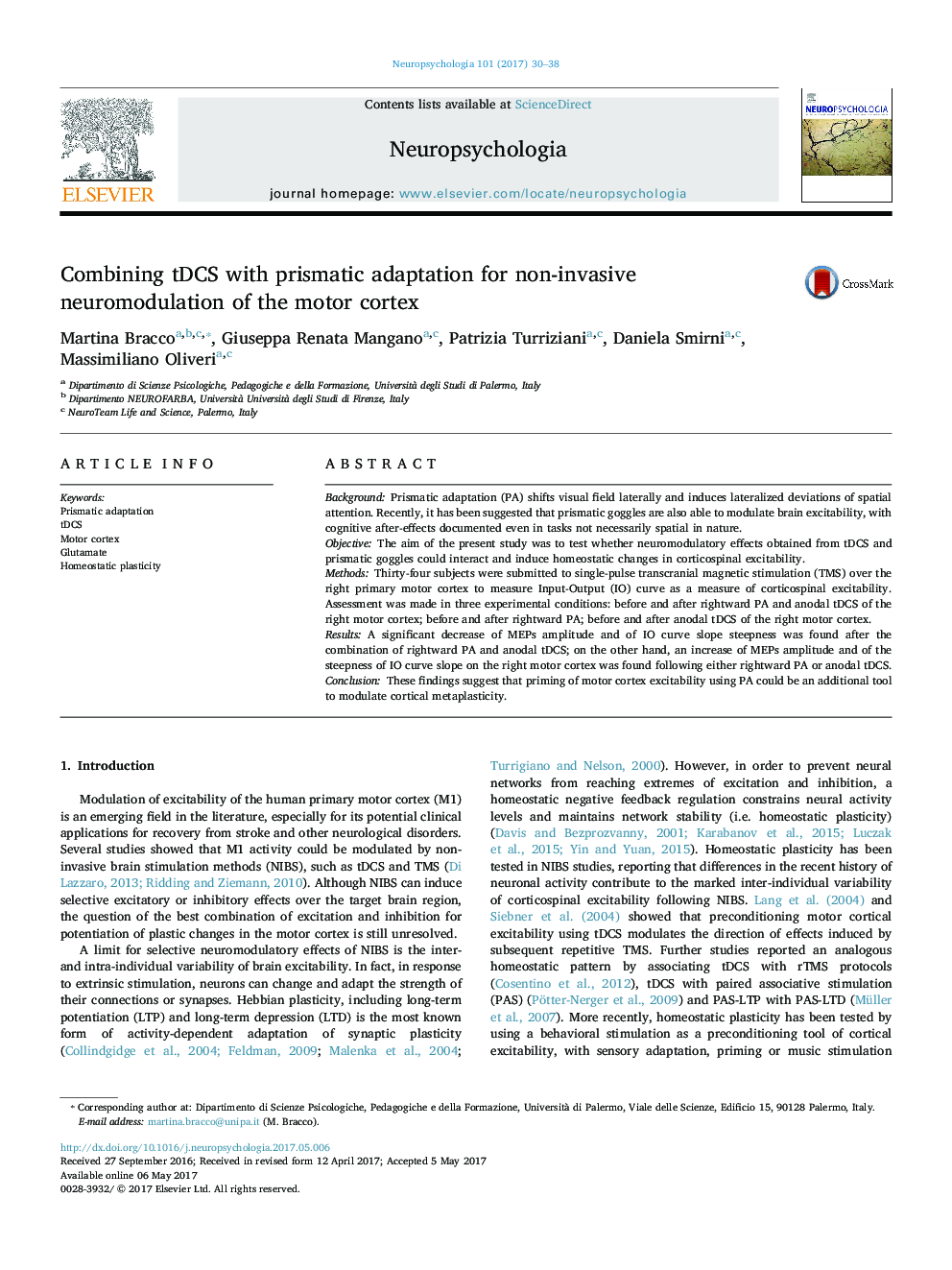| Article ID | Journal | Published Year | Pages | File Type |
|---|---|---|---|---|
| 5045163 | Neuropsychologia | 2017 | 9 Pages |
â¢Prismatic adaptation and tDCS were used to modulate the right M1.â¢Prismatic adaptation and tDCS were combined to test whether their effects can mutually interact.â¢Single-pulse TMS were used to measure M1 excitability.â¢Subjects' M1 excitability significantly increased after either rightward prismatic adaptation or anodal tDCS.â¢Subjects' IO M1 excitability significantly decreased after the combination of rightward PA and anodal tDCS.
BackgroundPrismatic adaptation (PA) shifts visual field laterally and induces lateralized deviations of spatial attention. Recently, it has been suggested that prismatic goggles are also able to modulate brain excitability, with cognitive after-effects documented even in tasks not necessarily spatial in nature.ObjectiveThe aim of the present study was to test whether neuromodulatory effects obtained from tDCS and prismatic goggles could interact and induce homeostatic changes in corticospinal excitability.MethodsThirty-four subjects were submitted to single-pulse transcranial magnetic stimulation (TMS) over the right primary motor cortex to measure Input-Output (IO) curve as a measure of corticospinal excitability. Assessment was made in three experimental conditions: before and after rightward PA and anodal tDCS of the right motor cortex; before and after rightward PA; before and after anodal tDCS of the right motor cortex.ResultsA significant decrease of MEPs amplitude and of IO curve slope steepness was found after the combination of rightward PA and anodal tDCS; on the other hand, an increase of MEPs amplitude and of the steepness of IO curve slope on the right motor cortex was found following either rightward PA or anodal tDCS.ConclusionThese findings suggest that priming of motor cortex excitability using PA could be an additional tool to modulate cortical metaplasticity.
